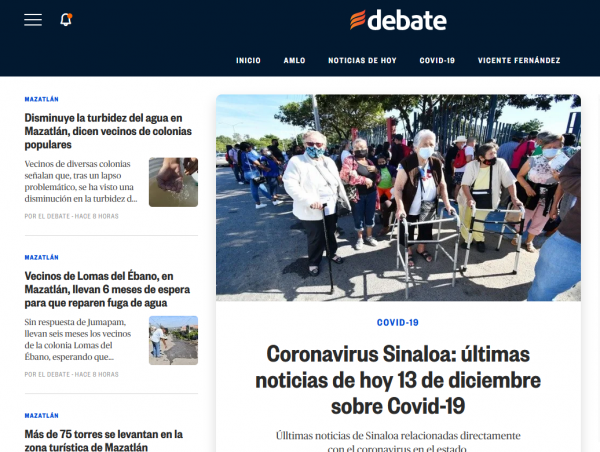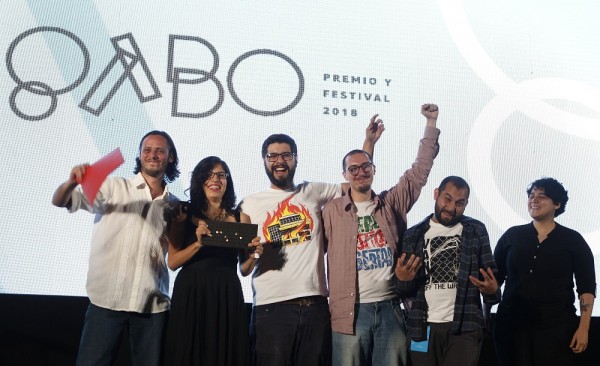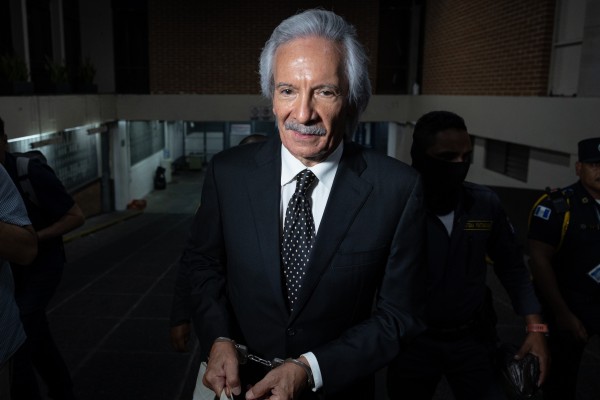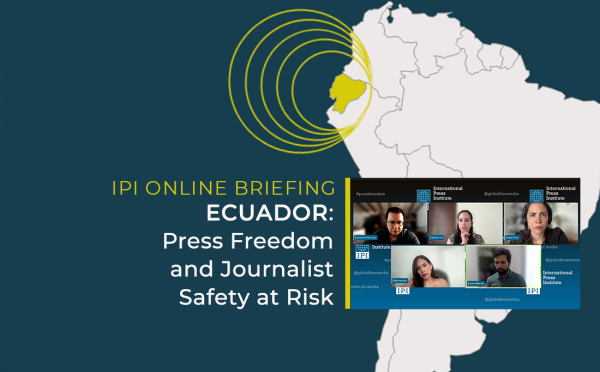Across Latin America, new digital and local media are pushing back against the erosion of journalism’s fundamentals with an impressive diversity in their operations, revenue sources, and innovations, write Andres Schafer and Nathalie Alvaray in this first part of their deep dive into how journalists and media builders are breaking the media mold.
It’s about hacking the old model. As Chani Guyot, founder of Argentine digital news site Red/Acción says: “We hack the extreme negativity so installed in the media ecosystem.” In its place, new and transitioning digital media are centring their audiences by reporting the news and information they want and need.
In spite of the rise of populism and authoritarianism, the penetration of organized crime, and the rampant social inequality – all of which are challenging what seemed to be a settling democratic space – local and digital native news enterprises in Latin America have made a virtue of necessity and followed very different paths to attain economic viability. Each is shaped by the terrain it finds itself on, and success or failure depend on understanding these circumstances. Here, we look at how three such outlets are breaking the media mold to build sustainability.
On October 17, 2019, the Mexican city of Culiacán became a field of war. The son of drug lord “El Chapo” Guzmán had been arrested in a military operation and the Sinaloa cartel took the city by storm. All of Culiacán succumbed to the assault of the drug cartel and the Mexican state had to release its prisoner. During those hours of collapse and total absence of information from the authorities, the live coverage of the local news site El Debate was the only source of information. Journalists reported where clashes were happening, what to do, where to go, and where not to go. Their work also became the source for other newspapers in the country. On that day, those who hadn’t realized the crucial role of El Debate couldn’t fail to notice now.
From the village to the wider world
Geography and demographics are everything. El Debate is an old local newspaper in the state of Sinaloa, Mexico. It was founded in 1941 and acquired statewide dominance by extending its operations to Culiacán and four other cities.
Its arrival in the digital era came late, but then things took off very quickly. “At first we were just catching up”, Andrea Miranda, the group’s editor-in-chief, says. “But then we realized there was a lot to gain”. The newspaper has changed a lot but one thing remains: loyalty to its local audience.
El Debate had made it customary to serve its readers by helping with everyday problems: someone’s house has burned down and they need help; a water pipe burst; type O blood donors are urgently needed.
Thus, its growth strategy on the web was to first reach out to Sinaloans living in neighboring states, and then in all of Mexico and finally abroad. On this road, other audiences neither belonging to nor coming from Sinaloa joined the readership.
Today, El Debate runs 16 different online iterations of its main publication, depending on where its audience is located: six for different Sinaloan cities, one for Mexico City, another one for Mexico State, one for the U.S., and one for the Americas. Forty-four percent of web traffic for the El Debate group comes from abroad, and 56 percent comes from Mexico, for a total of 210 million monthly users across its all its digital platforms. Its main source of revenue comes from programmatic advertising, but the print operation remains profitable and there is also a good proportion of paid advertising from local businesses.

Screenshot debate.com.mx.
Unlike traditional media in large cities, local media, and especially radio stations, are often active in their communities, breaking the fourth wall. El Debate group owns clinics, universities, and construction companies and also organizes events of all kinds, as well as sports tournaments. The largest amateur soccer tournament in Mexico is organized by El Debate, as are five fishing tournaments and the Carnival celebration of Los Mochis. This events operation in turn was the cue for a new turn on its web operations.
Five years ago El Debate began launching verticals. SoyCarmín, a lifestyle site and AlBat, dedicated exclusively to Major League and Mexican baseball, were the first two. “When we discovered how things worked on the Internet and how to deal with the audience our boss said: let’s do more”, Andrea Miranda recounts. At this stage, they really began to reach niche audiences. “Big Fish” is a fishing vertical and is an offshoot of their fishing tournaments. A social events vertical was shut down during the COVID-19 pandemic, for obvious reasons, but nevertheless El Debate came out with 20 new domains under the lockdown.
“The first thing is letting the people on the team have ownership over things and then, get out of their way” – Andrea Miranda, El Debate
For Miranda, you have to know how to adapt to constant change. “The algorithm changes, people change… Five years ago we wrote that Netflix was going to be our competition.” To stay in the game, today El Debate has another vertical around content streaming called Naciónflix. Another vertical, Nacion Rex, caters to generation Z. Today, the group runs a total of 32 verticals. Some of their sites don’t even have an audience in Sinaloa.
When asked about the secret to their success, Miranda says the group’s management lets people try things and views mistakes as part of their learning process. “The first thing is letting the people on the team have ownership over things…and then, get out of their way.”
Against news intoxication
The first thing you notice when you land on the website of the Argentinean digital news site Red/Acción is that there is no breaking news. There are no political fights, no bills passed or rejected, no Oscar nominations. What you do discover, with some relief, is that the issues addressed seem to be the really important ones, the big challenges facing our world today.
According to its founder, Chani Guyot, a former director of the renowned newspaper La Nación, Red/Acción is “hacking” a media model of “extreme negativity”, polarization, and a “rabid” need for news – an “antidote against news intoxication”, as Guyot describes it. The site’s sustainability model is the opposite of the pursuit of traffic volume at all costs. “I understood that if we were going to expect programmatic or display advertising revenue…. our traffic numbers on the site would have to be… very important”, Guyot says. “But to me that was going to distract us from going after a model other than volume and speed….We looked for a model that could challenge that.”

Red/Acción seeks to engage its audience in conversation around six themes: climate change, gender equality, social inclusion, education, health and technology for the common good. Four products serve this purpose: the website, a 12-newsletter operation, the “Foco” podcast, and their social media content, with some 100,000 followers. They also run “Fibra”, a content studio for conscious brands.
Their impact is measured along five axes: covering under-reported stories, amplifying minority voices, explaining complex social issues, audience engagement, and encouraging their audiences to have a positive impact on society.
“I understood that if we were going to expect programmatic or display advertising revenue, our traffic numbers on the site would have to be very important. But to me that was going to distract us from going after a model other than volume and speed. We looked for a model that could challenge that.” – Chani Guyot, Red/Acción
If two pillars of Red/Acción’s work are to be distinguished, they would be their membership model and Fibra Studio. The membership program provides both 18 percent of its revenues and the pillars for its core spirit. Every month Red/Acción launches one “campaign of the month” to help its audience have a practical impact on reality. As part of this campaign they provide information on the subjects and solutions as to how to get involved, as well as a feedback loop to enrich the proposal. They also organize Zoom groups with newsletter subscribers, who can then meet with journalists and experts. Members have access to the editorial staff and can propose topics for reporting. The site’s interactions on Twitter and Instagram again generate new stories and content. Newsletters have a personal and conversational tone rather than being a content distribution channel. The content is designed to interact with the reader, such as the True/False news game with tools to detect misinformation. The intention is to create a community instead of imposing one-way communication.
The Fibra studio creates content for conscious brands (“we believe in brands as a medium, not as a message”) and generates 50 percent of revenues. Red/Acción’s revenue model is complemented by the search for grants and subsidies.
With an aggregate audience of 3.5 million people, mainly young and with more women than men, Red/Acción is now in the 2nd phase of the Velocidad accelerator, organized by the International Center for Journalists (ICFJ) and SembraMedia, with the financial support of Luminate.
From the factual to the phenomenal
Another participant in the second round of the Velocidad accelerator is the Paraguayan visual journalism site El Surtidor, more commonly known as El Surti. Its similarities with Red/Acción are clear. Like its Argentinian counterpart, El Surti is not chasing breaking news.
“We set out to make our journalism more phenomenal than factual”, Alejandro Valdez, one of the site’s founders, says. It is not about the plain facts, he explains, but about finding the reasons and relationships behind those facts.
According to Valdez, El Surti was born as a JPG on a Facebook page, in response to a society with extremely high inequality in land access coupled with high media ownership concentration. It was also the reaction of an emerging generation, born after the fall in 1989 of Alfredo Stroessner’s 36-year dictatorship, to find its voice in a panorama dominated by traditional power groups. Its audience is young, urban, and middle class.
From there they developed an innovative style of visual journalism, with scrolling, poster-like graphics, called “surti scroll”, creating a new narrative “scrollytelling” in HTML that takes into account the precariousness of the internet in Paraguay.
“We set out to make our journalism more phenomenal than factual”, Alejandro Valdez, one of El Surti’s founders, says. It is not about the plain facts, he explains, but about finding the reasons and relationships behind those facts.
When they hit the Velocidad accelerator, they realized that their value proposition resided in the way they implemented visual journalism. They then decided to scale in two areas: Memétic.Media, a visual storytelling studio that offers services to social and cultural organizations in Spain and Latin America, responsible for 30 percent of their revenues; and Latinográficas, a collaborative visual journalism training space for other colleagues in Latin America.
El Surti’s journalism focuses on what it calls “Phenomena”: Futures, Sovereigns, Oligarchy, and Coronavirus. Their method is straight to the point and visually appealing. This makes it possible to learn, for example, what is behind the large agribusiness industry in Paraguay and the enormous damage it is causing to the environment and communities. Or, in “Soberanas”, the phenomenon of “mansplaining”, or “what they call love, is unpaid labour”, on the phenomenon of women still carrying the main burden of home care and child raising. In doing so they differ from traditional media, which, according to Valdez, are in the hands of the same large landowners, who, by their interests alone, not in a position to objectively cover the environmental destruction of Paraguay. “It’s the same deforesters”, he says.

Members of El Surtidor celebrate their Gabriel Garcia Marquez Journalism Award in the category of innovation in 2018. EPA-EFE/LUIS EDUARDO NORIEGA A.
There is a whole fact-checking section to counter disinformation campaigns on coronavirus and other topics. And to reach more remote communities and serve those who speak only Guaraní, a language without written expression, El Surti has partnered with local radio stations.
For Valdez, “the sustainability of independence is a daily construction. …. One is never completely independent and never completely sustainable.”
Real world engagement is a viable business model
These three media reflect the very different operations and revenue streams of new and transitioning media. But they have one thing in common: their business models go beyond monetizing news reporting. They draw on an old tradition of local media and radio stations in Latin America and swap over into the real world, whether through teaching, consulting, event hosting, or citizen participation. By staying true to this tradition, while innovating in surprising but consistent directions, their stories bear important lessons for future enterprises.
This story is part of IPI’s Local Journalism Project. IPI’s work mapping, networking and supporting quality innovative media serving local communities is supported by the Friedrich Naumann Foundation and Craig Newmark Philanthropies.



